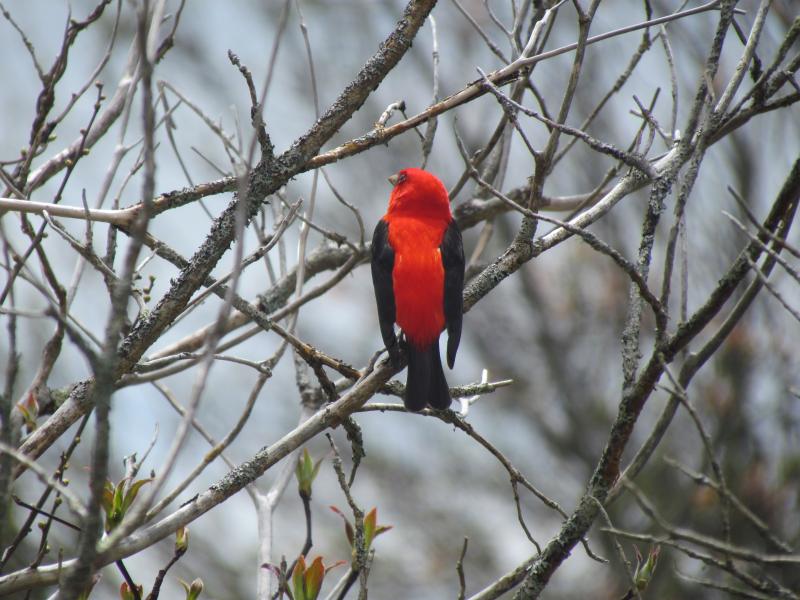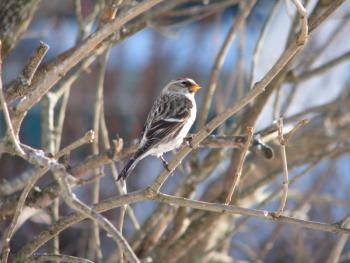A Conservation Gift to the World Wrapped Up in Montreal

Over this weekend, while much the world was fretting over holiday shopping, the clock ticked closer to the end of the largest and most important biodiversity negotiation in the world. It took place at COP15 in Montreal, as we wrote about in our previous column. Official negotiators and observers alike were exhausted and worried that they may not reach a meaningful agreement. For good reason: Throughout the weeks-long process, very little of the text of the new Kunming-Montreal Global Biodiversity Framework agreement had been finalized.
Would world leaders do the right thing for birds and all biodiversity?
From early December through the weekend, hundreds of presentations and events were held by both non-governmental and governments to highlight the major issues related to biodiversity conservation and to pressure negotiators to the highest ambitions. National Audubon participated in several of these events related to conservation in Canada’s Boreal Forest region including one on the globally important bird migration corridor of the Hudson-James Bay Lowlands. Another was on a bird sound recording project in the 12-million-acre Seal River Watershed in northern Manitoba being proposed for protection by the four First Nations whose traditional territories overlap with the region.
While there were a great many targets that each person and organization hoped to be included in the agreement, there were four main themes that we and many others were watching for:
- An explicit goal of protecting 30% of lands and waters by 2030;
- Recognition of the rights of Indigenous people and their knowledge and leadership in conservation and land-use decisions;
- The need for vastly increased funding for biodiversity conservation including support from wealthy nations to those that are under-resourced but contain much of the world’s biodiversity, and;
- The need for support and encouragement of nature-based climate solutions that conserve biodiversity while maintaining carbon storage to mitigate climate change.
On Sunday night the 7:30 PM time slotted for the plenary session announcing the hoped-for final agreement came and went. The announcement was pushed back by an hour, then several hours more. Behind the scenes, environment ministers and their negotiating teams were meeting, trying to find agreements on countless provisions within the agreement. Canadian Environment Minister Steven Guilbeault and his team took on a major role, working with China’s delegation, to shepherd the process forward. Finally, at 3 AM on Monday morning, the agreement was finalized!
Amazingly, the Global Biodiversity Framework includes the specific—and much-higher benchmark—of protecting 30% of lands and waters by 2030, up from the previous benchmark of 17% of lands and waters. You may or may not be surprised to learn that, here in Maine, the 30 by 30 vision was included as a goal within Governor Mill’s Maine’s Climate Action Plan released in 2020, which the Natural Resources Council of Maine was instrumental in creating. Now the world has caught up with us!
The Global Biodiversity Framework also explicitly recognizes the rights of Indigenous people and that land-use decisions about their lands should be made by them. The agreement set a goal of bringing annual total worldwide biodiversity funding to $200 billion per year and doubling the amount of funding from wealthy nations going to under-resourced but biodiversity-rich countries from $10 billion to $20 billion by 2025, and to $30 billion by 2030. And, yes, the crucial role of nature-based climate solutions was acknowledged as well.
It is always remarkable when multiple countries can agree on anything. But when over 190 of the world’s nations can agree on goals for biodiversity conservation as forward thinking as these, it is cause for optimism. The question of whether these goals are reached or even attempted to be reached depends largely on you and me. Democratic governments at least are accountable to the people, and leaders must be reminded of the values we hold dear. Like making sure that our natural world is healthy, with robust and resilient wildlife populations (birds included), intact forests and wetlands, and clean air and waters.
The goals contained in the new Global Biodiversity Framework are ones that we can push our elected leaders to adhere to and find ways to bring funding to support. Here in Maine, that includes the continued funding of our Land for Maine’s Future program, the move to a clean energy future, and federal government support through programs like the North American Wetlands Conservation Act and many others.
In the coming months and years, conservation organizations like the Natural Resources Council of Maine and National Audubon will be asking us all to help remind our leaders of the goals that the nations of the world adopted together in 2022 so we can push them to do what needs to be done for birds, for nature, for people. We hope you will join us and stand ready to be part of leading the way.
Jeffrey V. Wells, Ph.D., is a Fellow of the Cornell Lab of Ornithology and Vice President of Boreal Conservation for National Audubon. Dr. Wells is one of the nation's leading bird experts and conservation biologists and author of the “Birder’s Conservation Handbook.” His grandfather, the late John Chase, was a columnist for the Boothbay Register for many years. Allison Childs Wells, formerly of the Cornell Lab of Ornithology, is a senior director at the Natural Resources Council of Maine, a nonprofit membership organization working statewide to protect the nature of Maine. Both are widely published natural history writers and are the authors of the popular books, “Maine’s Favorite Birds” (Tilbury House) and “Birds of Aruba, Bonaire, and Curaçao: A Site and Field Guide,” (Cornell University Press).






























.png)
.png)
